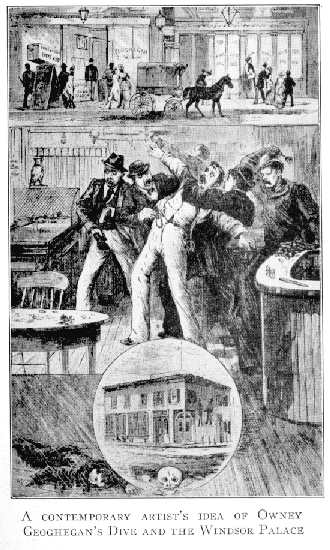N E I G H B O R S A S S O C I A T I O N ( L I N A )
t h e b o w e r y
In the 1880s and '90s the Bowery thronged with revelers. "The liveliest mile on the face of the earth," as the street was then called, it hosted concert halls, dance clubs, saloons, theatres, and other assorted nightspots. Some, like the Windsor Palace and the Crystal Palace, sported high-toned names that gave little indication of what lay inside. Others, like the Mug and the Sailor's Snug Harbor, were openly tawdry.

|
Raw whisky was sold at ten cents the drink, and pickpockets and lush workers were always there, ready to rob the guest who passed into torpor. The gorilla-like waiters were necessary to the clientele, and for a purse of five dollars any two of them would put on a bare-knuckle fight in the house |
The more playful aspects of the Gay Nineties were memorialized in The Bowery, a 1933 film that featured Wallace Beery as the owner of a Bowery saloon.